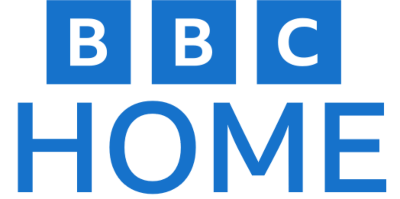The self-publishing landscape in 2025 continues to evolve rapidly, offering authors unprecedented control and diverse avenues for getting their books to market. With new technologies like AI influencing everything from content creation to marketing, and a sustained boom in ebook and audiobook demand, choosing the right platform is more crucial than ever.
Here’s a comparison of the largest self publishing companies in 2025, taking into account their core strengths, features, and ideal use cases for authors.
Key Trends Shaping Self-Publishing in 2025:
Before diving into the platforms, it’s worth noting some overarching trends:
- AI Integration: AI is becoming more mainstream for editing, generating marketing copy, and even analyzing market trends. Many platforms are incorporating AI-powered tools or supporting author use of external AI services.
- Continued Growth of Ebooks and Audiobooks: Digital formats remain highly popular, offering convenience and accessibility. AI narration is also making audiobook production more affordable.
- Direct-to-Consumer Sales: Authors are increasingly looking to sell directly from their own websites, fostering stronger reader relationships and higher profit margins.
- Global Reach: The demand for books across diverse international markets continues to grow, making platforms with strong global distribution networks even more valuable.
- Quality and Professionalism: As the market matures, readers expect self-published books to meet professional standards in editing, cover design, and formatting.
Comparing the Top Self-Publishing Platforms in 2025:
1. Amazon Kindle Direct Publishing (KDP)
- Strengths:
- Market Dominance: Still the largest self-publishing platform, offering unparalleled access to Amazon’s massive global customer base. A significant majority of self-published ebook sales occur here.
- Free & Easy: No upfront costs to publish ebooks or print-on-demand (paperbacks/hardcovers). The platform is very user-friendly.
- High Royalties: Offers up to 70% royalties on ebooks priced between $2.99 and $9.99.
- KDP Select: An optional exclusivity program that provides access to Kindle Unlimited (subscription reading) and powerful promotional tools like Kindle Countdown Deals and Free Book Promotions.
- Global Print-on-Demand: Seamless integration with Amazon’s global printing and distribution network.
- Best For: Most authors, especially those prioritizing ebook sales, maximum reach within the Amazon ecosystem, and ease of use. Ideal for both new and experienced authors.
- Considerations: KDP Select requires 90-day ebook exclusivity on Amazon. The sheer volume of books means strong marketing is essential to stand out.
2. IngramSpark
- Strengths:
- Unrivaled Global Print Distribution: The industry gold standard for print-on-demand (POD) distribution. Connects your print book to over 40,000 retailers, libraries, and schools worldwide through Ingram Content Group’s vast network.
- Professional Quality: Often cited for higher print quality and more advanced print options (e.g., hardcovers, various paper types) compared to KDP Print.
- Library and Bookstore Accessibility: Makes your print book easily orderable by physical bookstores and libraries globally, crucial for wider discoverability beyond Amazon.
- Ebook Distribution: Also distributes ebooks to major retailers.
- Best For: Authors prioritizing professional print quality, wide print distribution to physical stores and libraries, and global reach for their physical books. Often used in conjunction with KDP.
- Considerations: Has a small setup fee per title (though promotions can waive this). The interface can be slightly more complex for absolute beginners.
3. Draft2Digital (D2D)
- Strengths:
- Premier Ebook Aggregator: Simplifies wide ebook distribution by allowing you to upload once and distribute to almost all major ebook retailers outside of Amazon (Apple Books, Kobo, Barnes & Noble Press, Google Play Books, Scribd, Tolino, and various library platforms).
- Free Automated Formatting: Excellent, free tools to format your manuscript into various ebook formats.
- User-Friendly Interface: Known for its clean, intuitive platform, making it very accessible for beginners.
- D2D Print: Offers a print-on-demand service that leverages IngramSpark’s network for paperback distribution, providing a streamlined solution for both ebook and print.
- Best For: Authors who want broad ebook distribution beyond Amazon without the hassle of uploading to each platform individually. Excellent for new authors due to its ease of use and free formatting.
- Considerations: Takes a small percentage of royalties (around 10-15%) for its aggregation service.
4. PublishDrive
- Strengths:
- Advanced Global Aggregator: Distributes ebooks, audiobooks, and even POD print books to a massive network (over 400 stores, 240,000 libraries globally), including many niche and emerging markets.
- Subscription Model: Offers a unique subscription pricing model where authors can retain 100% of their royalties (after retailer fees) once the subscription is paid, rather than a percentage cut per sale.
- Analytics & Marketing Tools: Provides robust analytics and AI-powered tools for market insights, metadata optimization, and marketing assistance.
- Audiobook Distribution: Strong capabilities for distributing audiobooks to a wide array of platforms.
- Best For: Authors seeking maximum global reach, particularly in emerging markets, and those who prefer a subscription model to maximize per-unit royalties. Ideal for authors with multiple titles.
- Considerations: The subscription fee can be an initial hurdle for authors with limited budgets or only one book.
5. Kobo Writing Life
- Strengths:
- Strong International Ebook Presence: Kobo has a significant and loyal readership in Canada, Europe, and Asia, making it a powerful platform for reaching global audiences outside the US.
- Non-Exclusive: Does not require exclusivity, allowing you to publish elsewhere simultaneously.
- Competitive Royalties: Offers up to 70% royalties on ebooks.
- User-Friendly: A relatively straightforward platform for direct ebook publishing.
- Best For: Authors targeting international ebook readers, especially in regions where Kobo has a strong market share.
6. Barnes & Noble Press
- Strengths:
- Access to B&N Marketplace: Publishes ebooks (Nook) and print books directly to the Barnes & Noble online store, with potential for stocking in physical B&N stores.
- Competitive Royalties: Offers competitive royalty rates.
- No Upfront Costs: Free to publish.
- Best For: Authors specifically targeting the US market and Barnes & Noble’s loyal customer base, particularly those hoping for potential physical bookstore visibility.
- Considerations: Primarily US-centric and a smaller market share compared to Amazon.
The Recommended Strategy for 2025: A Hybrid Approach
For most authors, a combined strategy offers the best of all worlds:
- Amazon KDP: Essential for reaching the largest ebook and print audience via Amazon.
- Draft2Digital (or PublishDrive): To distribute your ebook widely to all other major global retailers and library platforms, ensuring comprehensive ebook reach.
- IngramSpark: For the most extensive global print distribution, particularly for physical bookstores and libraries.
By leveraging the unique strengths of each platform, authors in 2025 can achieve professional-quality books, maximize their global reach, and retain the creative and financial control that self-publishing offers. Remember to constantly monitor industry trends and adapt your strategy to stay ahead in this dynamic landscape.







